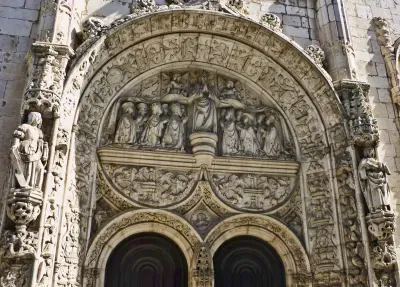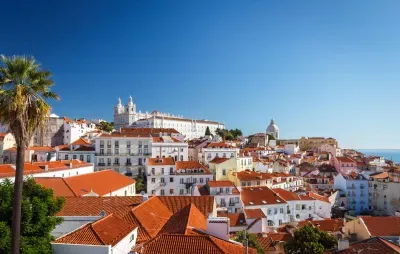
Manueline portal - Igreja da Nossa Senhora da Conceição SchiDD CC BY-SA
Igreja da Conceição Velha Joaomartinho63 CC BY-SAIgreja da Nossa Senhora da Conceição Velha
Built around 1500 on the site of an ancient synagogue, and also known as Our Lady of the Conception, this was once the second largest place of worship in Manueline Lisbon. Nowadays this historic church, with an ornate façade reminiscent in style and grandeur of the Jerónimos Monastery in Belém, seems to be sandwiched between two more pedestrian buildings down a largely overlooked street. But therein lies the story of this building.
Mostly destroyed in the 1755 earthquake, the once enormous Igreja da Santa Casa da Misericórdia was reconfigured into this smaller version during the great rebuilding of Lisbon’s city centre. Salvaging what they could, the side entrance became the main entrance making the church run, unusually, along a north-south axis instead of east to west. The monks of the original Misericórdia brotherhood moved to another church during the rebuilding and it was then given to the order of Nossa Senhora da Conceição by King José.
The remaining façade and entrance is the main reason to visit. Architecturally speaking, it is Manueline in style, with two decorative windows flanking a recessed archway where the tympanum above the double-arched doors depicts the Virgin Mary supported by angels and accompanied by various important religious and royal figures in sculpted relief (including King Manuel and his sister Queen Leonor). You can see examples of the architectural ornamentation typical of this late Gothic style (named Manueline in Portugal after King Manuel who reigned in the 16th century) in the carved representations of ropes, plants, animals and the multiple pillars, arches and recessed layers.
Of note inside is a painting of Nossa Senhora do Restelo, which was a gifted to the church by Henry the Navigator.
Address
Rua da Alfândega 108Lisbon1100-016Attraction type

Lisbon travel guide »
Lisbon is one of the most immediately likeable capitals in Europe. Located on the westernmost front of Continental Europe, its mosaic of terracotta roofed buildings cling both majestically and humbly to its seven hills. The Tejo River sweeps past the many character-rich districts which border it, carrying boats big and small and is straddled by two impressive bridges. Some ultra modern…